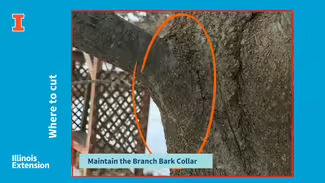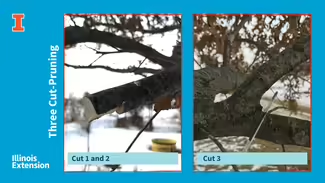
In the spirit of Valentine’s Day, I want to share one of my great horticulture loves with you all…pruning. I love the idea of it, the exercise of pruning, the science of it, and the potential it has for significantly improving the health and longevity of woody plant material.
Since trees are large, long-lived plants in our landscape, pruning activities done throughout the life of a tree can have a significant impact on how that tree functions in the landscape and how long it survives. Proper pruning conducted while a tree is young can have exponentially advantageous results for overall tree health, maintenance requirements, and beauty.
Before making a cut
Before making a pruning cut, it is important to assess the entire tree and surrounding site conditions that influence the tree. It is also critical to articulate desired objectives for pruning. Every pruning cut, large or small, should have an explicit purpose and advance the tree toward the identified objectives. Reasons to make a pruning cut include safety, health, or aesthetics.
Pruning for safety involves pruning branches that interfere with human activities or pose a threat of causing harm. Examples of pruning activities that immediately improve safety include the removal of limbs that block traffic site lines, or branches over sidewalks and trails that impede pedestrian traffic. Additionally, broken limbs in the canopy pose a fall risk and should be removed for improved safety.
Pruning trees for structural integrity is an effective way to increase safety and promote tree health, especially while trees are young. One of the most common structural concerns is co-dominant leaders. Trees with two or more dominant leaders develop structurally weak branch angles that threaten to split under the weight of the canopy. Corrective pruning should be done to encourage a single leader. Pruning dead or diseased limbs removes disease pathogens from the tree and is always a top priority of pruning activities.
Pruning for aesthetic reasons steps away from purely scientific methodology and incorporates artistic priorities in decision making. Bonsai is a well-known practice of pruning for aesthetics. Botanic gardens and formal landscapes prune trees into unnatural forms to frame views, create symmetry, reinforce lines such as a hedge would do, and more. Pruning for aesthetic reasons alone usually produces high-maintenance needs. The use of proper pruning cuts is still recommended.
When to prune
The late dormant season is the optimal time to prune trees. Once deciduous trees have shed their leaves, it is easier to assess the overall form of the tree and make informed decisions. Pruning during the late dormant season versus the growing season gives trees an opportunity to access energy produced by leaves.
Another reason to prune during the dormant season is that opportunistic insects and disease pathogens are also dormant, reducing the risk of infection prior to compartmentalization. This is especially important when pruning oak species. Oak wilt is a lethal, fungal disease that can be transported from tree to tree by beetles attracted to the pheromones released by a wound.
Making the cut
Once a pruning cut has been determined to be necessary, proper technique is required. Preservation of the branch bark collar is essential to wound sealing. The branch bark collar is a swollen area around the branch where it connects to the trunk of the tree. Pruning practices of the past that include flush cuts removed the branch bark collar and are no longer recommended as best practices. Pruning cuts should be made just outside of the branch bark collar and have a smooth finish. If larger branches are being removed, a three-point pruning cut is recommended to avoid ripping the bark as the limb falls during the pruning activity, under the weight of the branch.
Painting the wound with paint is not recommended, although it was in the past. Studies have shown that this practice does not accelerate the sealing process, nor does it prevent decay. In some cases, wound dressing have been observed to stall compartmentalization processes and protect decay fungi. The exception to this recommendation is if pruning of oaks or elms is required during the growing season. To protect against the spread of oak wilt or Dutch elm disease, apply a latex-based house paint to the wound within 10 to 15 minutes of making the cut. Recommendations are to avoid pruning these susceptible species during the growing season unless unavoidable, for example after storm damage has occurred.
Pruning is an ongoing maintenance activity and trees should be assessed annually for pruning needs. Being consistent with assessment and action can help minimize the workload for pruning and minimize stress response in trees. Proper and consistent pruning activities from the time of planting help improve long-term health and resilience. If mature trees need pruning, it is recommended that a professional arborist be consulted. Safety should always be the top priority. Pruning activities that require lift equipment or power tools should be performed by a professional arborist.
Good Growing Fact of the Week: University of Illinois Horticulture has a webinar recording available on our YouTube channel devoted to the topic of pruning.
Thank you for reading!
Sign up for our emails! Want to get notified when new Good Growing posts are available? SIGN ME UP
Give us feedback! How helpful was this information (click one): Very helpful | Somewhat helpful | Not very helpful

